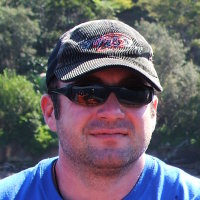
Tom Mullaney
 School of Biological Earth and Environmental Science
School of Biological Earth and Environmental Science
University of New South Wales
Sydney NSW 2052
AUSTRALIA
Phone: +612 9385 2118
Fax: +612 9385 1558
Email: t.mullaney at student.unsw.edu.au
Honours Projects
Tom graduated in early 2004 after completing his undergrad with honours at the end of 2003, researching the feeding ecology of hardyheads (a common estuarine baitfish) in a NSW estuary. Stomach content analyses were used to identify and quantify the common prey items. A measurement of a gut throughput rate and manipulative feeding experiments, using in situ mesocosms, allowed a daily predation rate to be estimated from the volume of prey consumed. Hardyheads consumed zooplankton (predominantly crustacean nauplii and copepods) and benthic fauna (predominantly polychaetes and bivalves). Predation was both selective (15-24 mm TL fish on crustacean nauplii) and opportunistic (25 - 34 mm TL fish on calanoid copepods). There was an ontogenetic shift in diet, with the shift from zooplankton to benthic fauna occurring in the 35-44 mm TL size class. For the hardyhead population as a whole, 25% of biomass uptake came from zooplankton and 75% from benthic fauna at a total rate of 20.6 mm3 of prey per gram of fish per day. In an estuarine system, the transfer of biomass from nutrients to baitfish and finfish populations through the benthos is just as or more important than via pelagic pathways. Understanding the feeding ecology of hardyheads will identify the role they (and other baitfish) play as a resource in estuarine systems.
